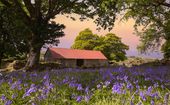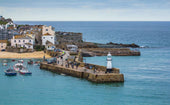A Photographer’s Guide to Lago di Braies and Val di Funes, Italy

A Photographer’s Guide to Lago di Braies and Val di Funes, Italy
Italy’s Dolomites region offers an enchanting blend of majestic mountains, serene lakes, and quaint alpine villages, making it a paradise for photographers. This guide focuses on two iconic locations: Lago di Braies and the Val di Funes, home to picturesque churches set against dramatic peaks. Here, you’ll find insights on the best times to visit, lenses to pack, and composition tips to make the most of your shoot.
Lago di Braies: Capturing Tranquility Amid Crowds
Lago di Braies, also known as Pragser Wildsee, is one of the most photographed lakes in the Dolomites. Surrounded by towering mountains and vibrant forests, its reflective waters create breathtaking compositions. However, its popularity means you’ll need a strategic approach to capture its beauty.
Best Time to Visit
Early morning is ideal, particularly around sunrise, when the lake is calm, and the light softens the landscape. While the area can get crowded quickly, arriving early also allows you to secure a good spot before the parking lot fills up.
Equipment Suggestions
- Lens: A wide-angle lens (16-35mm) is essential for capturing the lake’s expanse and reflections. Bring a telephoto lens (70-200mm or higher) to compress the background and highlight details like distant peaks or isolated trees.
- Filters: Use a polarizer to reduce glare on the water and enhance the vibrancy of the surrounding foliage. A neutral density (ND) filter is invaluable for long exposures, smoothing water ripples and removing moving people from the frame.
Composition Tips
- Leading Lines: Incorporate natural features like the iconic wooden fences or the shoreline to draw the viewer’s eye into the scene.
- Reflections: Position yourself low to the ground to maximize the lake’s reflective qualities, especially on calm days.
- Seasonal Highlights: In autumn, the vibrant colours of the surrounding trees contrast beautifully with the lake’s turquoise hues.
Practical Notes
Parking is available but often crowded. Campervans can park overnight for a fee, making it a convenient option for van lifers. Be prepared to wait for your desired composition and use long exposures to minimize human presence in your shots.
Val di Funes: Alpine Churches and Stunning Peaks

Val di Funes is a valley known for its iconic churches: St. Magdalena and St. Johann in Ranui. These photogenic locations are framed by the dramatic peaks of the Odle Range, offering endless opportunities for creative compositions.
Best Time to Visit
Golden hour at sunrise or sunset provides the most flattering light for the churches and their surroundings. Misty mornings often add a layer of mystery, especially in autumn.
Equipment Suggestions
- Lens: A mid-range zoom lens (24-105mm) works well for capturing both the churches and their context within the landscape. For distant peaks, a longer telephoto lens (70-200mm) helps isolate details and compress the scene.
- Filters: A polarizer enhances the greenery and reduces glare on leaves, while a graduated ND filter helps balance the exposure between the bright sky and darker foreground.
Composition Tips
- St. Johann in Ranui: Position the church slightly off-centre, using the rule of thirds for balance. The surrounding meadows and distant peaks create a harmonious composition.
- St. Magdalena: To emphasize the church’s connection to the mountains, step back and zoom in, creating a compressed perspective that magnifies the peaks.
- Foreground Elements: Incorporate fences, trees, or wildflowers to add depth and a sense of scale to your photos.
Practical Notes
Be mindful of private property when setting up your tripod. Drone photography is possible, but flying near livestock is avoided to prevent disturbances.
Overcoming Challenges in the Field
Weather conditions in the Dolomites can be unpredictable, with mist and clouds often rolling in unexpectedly. This can add mood to your shots but also limit visibility. Flexibility is key—if one location isn’t working out, consider exploring another nearby.
Another common challenge is dealing with crowds, especially at Lago di Braies. Long-exposure photography can help you “erase” moving people from your frame, but patience is required. Technical issues, such as stuck filters, can also arise; bringing basic tools like rubber bands or gloves for grip can save time and frustration. Remember, patience is a virtue in photography, and it often leads to the most rewarding shots.
General Tips for Success
- Scout Locations: Arrive early to familiarize yourself with the area and find unique compositions. Apps like PhotoPills can help plan shots based on sun and moon positions.
- Experiment with Angles: Don’t settle for the obvious viewpoints. Explore higher elevations or unconventional perspectives to create standout images.
- Seasonal Considerations: Autumn’s vibrant colours and winter’s snow-covered peaks offer contrasting moods. Research the best times for the look you want to achieve.
Conclusion
Lago di Braies and Val di Funes are must-visit locations for any landscape photographer exploring Italy. With careful planning, the right gear, and patience, you can capture the timeless beauty of these alpine gems. Whether you’re photographing the tranquil waters of Lago di Braies or the iconic churches of Val di Funes, these locations promise unforgettable experiences and stunning images.
Meet the Author:
I am a Devon based photographer, who enjoys travel, hiking, rugby and photographing the beautiful world in which we live in, I see photography as a creative expression upon visiting beautiful places. Each picture often tells a story.
Thank you for reading this article, please feel to share it with your friends and please check out all my photography - Wall Art and Framed Prints and our Italian Landscape Photography
Thanks
Sebastien Coell Photography




